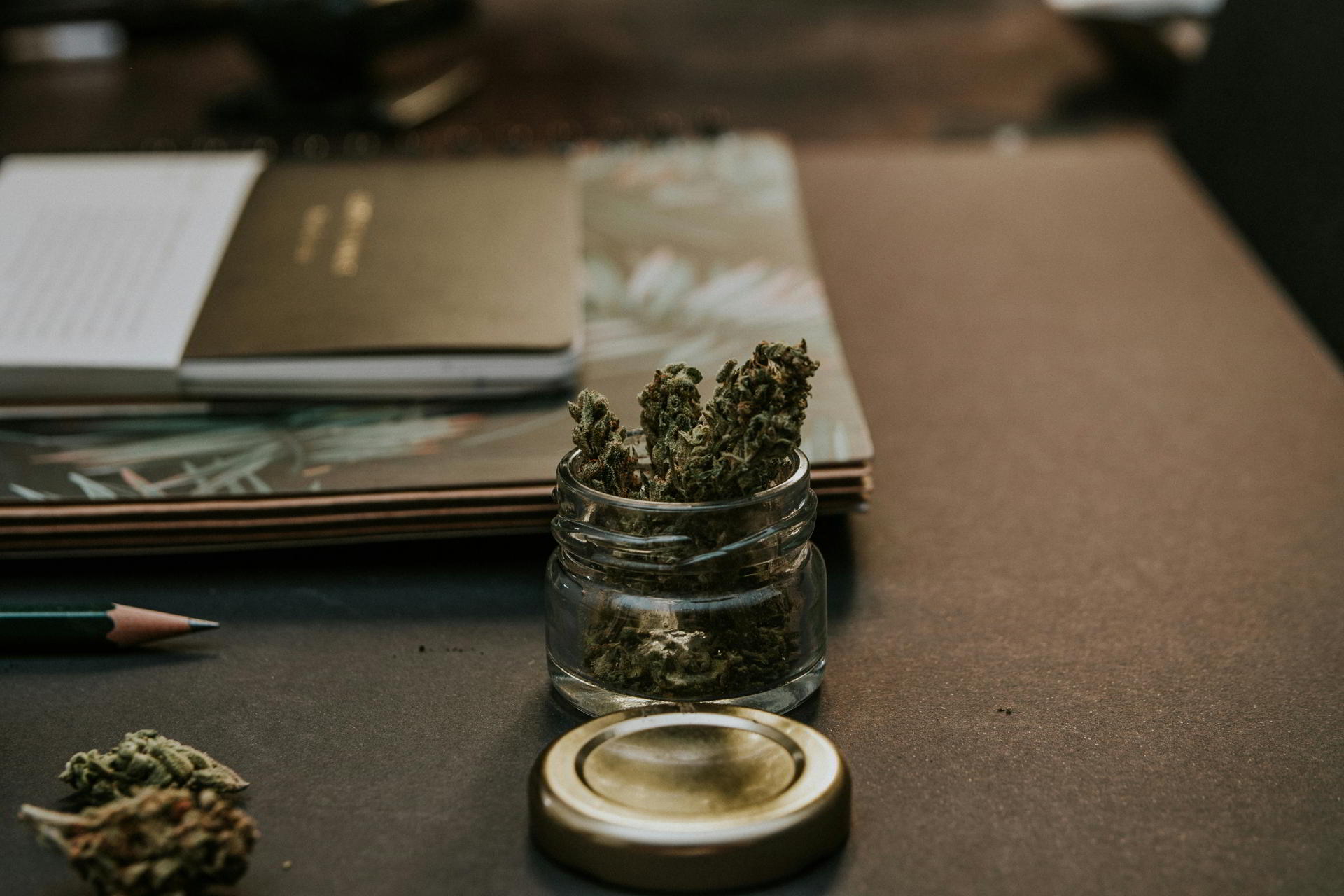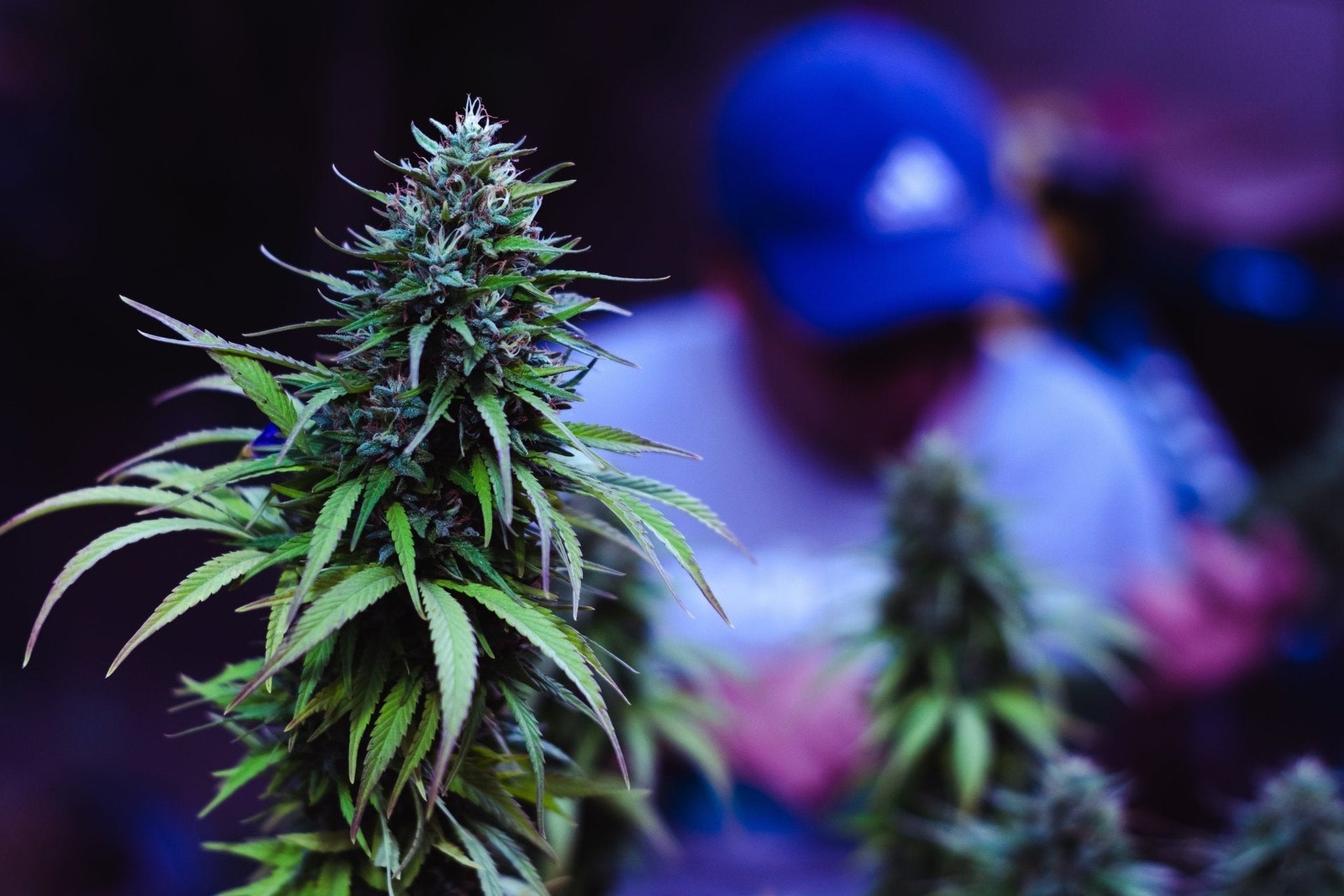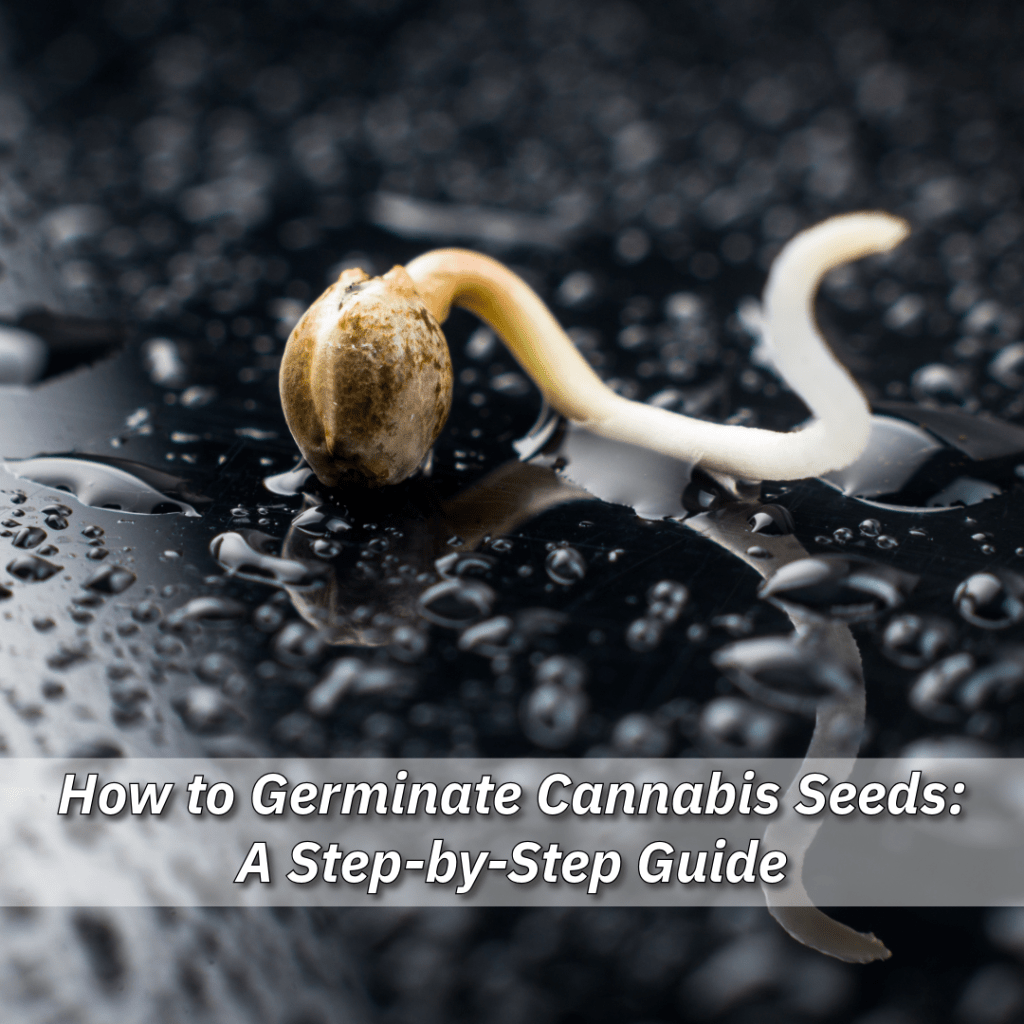
Maximize Cannabis Terpenes: Boost Aroma & Flavor Guide
More Aroma, More Flavor: How to Maximize Terpenes in Cannabis Cultivation
If you're aiming to grow cannabis that’s bursting with aroma, flavor, and effects, terpenes are your secret weapon! These organic compounds are responsible for the distinctive scents and tastes of each strain — from sweet citrus to earthy pine — and they play a major role in shaping the experience your final product delivers. Now, here’s the best part: with the right cultivation techniques, you can significantly increase terpene production and take your grow to the next level.
This article breaks down exactly how to get there. You’ll learn how to choose terpene-rich genetics. We’ll look at how to optimize your soil and nutrient approach to support full-spectrum flavor, and how to fine-tune your lighting and harvest timing to capture terpenes at their peak. We’ll also dive into the often-overlooked importance of drying and curing, and how these post-harvest steps can make or break your terpene profile.
By the end, you’ll have a clear, step-by-step understanding of how to strengthen the quality of your cannabis across every stage of the grow! If you’ve ever wanted buds that turn heads for their scent alone, you’re in the right place.
1. Start with the Right Genetics
Terpenes aren’t something you can simply add later. In fact, they’re part of the plant’s biological blueprint. No matter how perfect your grow environment is, if the strain you're working with doesn't have the genetic potential to produce high levels of terpenes, you’ll always be limited in the final result.
That’s why selecting the right cultivar is one of the most important decisions you can make. Some strains are naturally rich in terpenes, offering complex profiles that range from sweet citrus and tropical fruit to spicy herbs. These terpene-rich varieties have been bred and selected over generations for their depth. Starting with them gives you a head start before you've even planted a seed.
When researching strains, look for breeders who focus specifically on terpene development, and not just THC content. Explore lab-tested cultivars and terpene charts to find profiles that align with the kind of sensory experience you want your final product to deliver. If you're growing for connoisseurs or crafting premium flower, this step alone can improve your entire harvest.
Tip: Prioritize genetics with proven terpene potential (terpene reiche sorten) and avoid chasing trends unless the strain delivers on lab-backed flavor. Remember that great cannabis starts at the source!
2. Feed the Flavor: Soil and Nutrients Matter More Than You Think
The next step is creating an environment that allows those terpenes to fully express themselves. That always starts with the soil. The growing medium you use is a place for roots to anchor, but it’s also a living ecosystem that directly influences how your cannabis plants develop their aroma, flavor, and overall quality.
Healthy, biologically active soil encourages your plants to produce more secondary metabolites, including terpenes. Think of it like this: the more natural and balanced your nutrient delivery, the more your plants can focus on their full expression instead of simply surviving. Overloading with synthetic nutrients or pushing too hard for yield can actually suppress terpene production, leaving your buds looking good but lacking depth and complexity.
To bring out the full aromatic spectrum of your plants, aim for a soil rich in organic matter and microbial life. Compost, worm castings, bat guano, and mycorrhizal fungi can all work in harmony to create a nutrient-dense foundation. During the flowering phase, a light touch with phosphorus and potassium-rich amendments can support terpene development.
Tip: If you want to improve flavor and aroma naturally (cannabis geschmack verbessern), try brewing compost teas or using molasses to feed the soil biology. This supports beneficial microbes that in turn support your plant’s ability to create more nuanced terpene profiles. Keep your feeding schedule simple and clean, and avoid nutrient burn at all costs, as it’s one of the fastest ways to mute your terpene potential.
3. Let There Be (the Right) Light: Lighting Strategies for Maximum Terpenes
Lighting is one of the most powerful tools in your grow room. When it comes to terpene production, light directly influences how your plants develop their aromatic compounds. The type, intensity, and spectrum of light you use all play a role in shaping your final terpene profile.
Cannabis evolved under full-spectrum sunlight, which means it responds best to a wide range of wavelengths. Full-spectrum LED grow lights come closest to mimicking this natural environment indoors, and many growers find that switching from high-pressure sodium (HPS) to high-quality LEDs results in noticeably more flavorful, aromatic buds. You’re triggering the biological processes that lead to richer terpene expression!
Remember that the light’s intensity, duration, and temperature also matter. Excessive light stress, especially during the flowering stage, can lead to heat buildup that causes delicate terpenes to evaporate before harvest. On the flip side, too little light can stunt development and lead to underwhelming buds. Balance is key here.
Tip: Keep canopy temperatures between 24–28°C during the day and slightly cooler at night to reduce terpene loss. Aim for around 800–1000 PPFD during flowering for strong development without overexposure. If you're growing outdoors, time your season and positioning to maximize direct sunlight while shielding your plants from extreme heat spikes.
4. Timing Is Everything: Harvest When Terpenes Peak
While many growers focus heavily on THC percentages or bud size, those chasing next-level flavor and aroma know that terpene preservation starts with knowing exactly when to cut. Terpenes are highly volatile compounds. That means they can degrade quickly, especially if the plant is left too long on the vine or harvested too early. Pull the trigger too soon, and the terpenes may not have fully developed, resulting in a flat, grassy scent. Wait too long, and oxidation can dull or even alter the terpene profile, taking your fruity, floral notes and turning them earthy or bitter.
So how do you know when it's just right? Start by watching your trichomes closely. A good rule of thumb for terpene-focused growers is to harvest when most trichomes are cloudy, with a few just beginning to turn amber. This is often the window when both cannabinoids and terpenes are peaking. Inhale near the plant — its scent should be full-bodied and complex. That nose knows.
Tip: Monitor your plants daily during the final two weeks of flower. Use a jeweler’s loupe or digital microscope to check trichome maturity, and take notes on the aroma. If you’re growing multiple strains, harvest them individually rather than all at once. Each cultivar has its own rhythm, and honoring that is key to maximizing both potency and flavor (cannabis erntezeitpunkt).
5. Don’t Rush the Finish: Drying and Curing for Terpene Preservation
You’ve put weeks, or maybe months, into cultivating terpene-rich plants. But your work isn’t done yet. What you do after harvest is just as important as everything that came before. In fact, drying and curing are where the real magic happens. It can also be where it all goes wrong.
Terpenes are delicate and evaporate easily when exposed to heat, light, or overly dry conditions. To preserve those precious volatile compounds, you need to go slow and steady. Start by drying your trimmed (or whole) plants in a dark, well-ventilated space. Ideal conditions are around 18–22°C with 50–60% humidity. This process should take 7–14 days depending on your environment. Don’t crank up the heat or aim to “speed dry”. That’s just a fast track to crispy outsides, grassy flavors, and muted terpenes.
Once the stems snap instead of bend, your buds are ready for the cure. Place them in airtight glass jars, filling each jar about 70% to allow room for airflow. Open the jars daily for the first week to release moisture and bring in fresh air. This is called “burping.” Over the next few weeks, internal moisture balances out, and the terpene profile stabilizes.
Tip: Cure your buds for at least 2–4 weeks for best results (cannabis trocknen und curen), but some growers go up to 8–12 weeks for maximum smoothness and complexity. Store jars in a cool, dark place to avoid terpene degradation over time. If your goal is to increase terpene expression and improve overall quality (cannabis geschmack verbessern, cannabis qualität steigern), this final phase is where you seal the deal. Treat it with as much care as every other part of your grow—and your flower will speak for itself.
Final Thoughts
Maximizing terpene expression is all about making intentional choices at every stage of the grow. When you take the time to cultivate for flavor, not just yield, you’re well on your way to growing better buds with deeper flavors and smoother smoke.
More Aroma, More Flavor: How to Maximize Terpenes in Cannabis Cultivation
If you're aiming to grow cannabis that’s bursting with aroma, flavor, and effects, terpenes are your secret weapon! These organic compounds are responsible for the distinctive scents and tastes of each strain — from sweet citrus to earthy pine — and they play a major role in shaping the experience your final product delivers. Now, here’s the best part: with the right cultivation techniques, you can significantly increase terpene production and take your grow to the next level.
This article breaks down exactly how to get there. You’ll learn how to choose terpene-rich genetics. We’ll look at how to optimize your soil and nutrient approach to support full-spectrum flavor, and how to fine-tune your lighting and harvest timing to capture terpenes at their peak. We’ll also dive into the often-overlooked importance of drying and curing, and how these post-harvest steps can make or break your terpene profile.
By the end, you’ll have a clear, step-by-step understanding of how to strengthen the quality of your cannabis across every stage of the grow! If you’ve ever wanted buds that turn heads for their scent alone, you’re in the right place.
1. Start with the Right Genetics
Terpenes aren’t something you can simply add later. In fact, they’re part of the plant’s biological blueprint. No matter how perfect your grow environment is, if the strain you're working with doesn't have the genetic potential to produce high levels of terpenes, you’ll always be limited in the final result.
That’s why selecting the right cultivar is one of the most important decisions you can make. Some strains are naturally rich in terpenes, offering complex profiles that range from sweet citrus and tropical fruit to spicy herbs. These terpene-rich varieties have been bred and selected over generations for their depth. Starting with them gives you a head start before you've even planted a seed.
When researching strains, look for breeders who focus specifically on terpene development, and not just THC content. Explore lab-tested cultivars and terpene charts to find profiles that align with the kind of sensory experience you want your final product to deliver. If you're growing for connoisseurs or crafting premium flower, this step alone can improve your entire harvest.
Tip: Prioritize genetics with proven terpene potential (terpene reiche sorten) and avoid chasing trends unless the strain delivers on lab-backed flavor. Remember that great cannabis starts at the source!
2. Feed the Flavor: Soil and Nutrients Matter More Than You Think
The next step is creating an environment that allows those terpenes to fully express themselves. That always starts with the soil. The growing medium you use is a place for roots to anchor, but it’s also a living ecosystem that directly influences how your cannabis plants develop their aroma, flavor, and overall quality.
Healthy, biologically active soil encourages your plants to produce more secondary metabolites, including terpenes. Think of it like this: the more natural and balanced your nutrient delivery, the more your plants can focus on their full expression instead of simply surviving. Overloading with synthetic nutrients or pushing too hard for yield can actually suppress terpene production, leaving your buds looking good but lacking depth and complexity.
To bring out the full aromatic spectrum of your plants, aim for a soil rich in organic matter and microbial life. Compost, worm castings, bat guano, and mycorrhizal fungi can all work in harmony to create a nutrient-dense foundation. During the flowering phase, a light touch with phosphorus and potassium-rich amendments can support terpene development.
Tip: If you want to improve flavor and aroma naturally (cannabis geschmack verbessern), try brewing compost teas or using molasses to feed the soil biology. This supports beneficial microbes that in turn support your plant’s ability to create more nuanced terpene profiles. Keep your feeding schedule simple and clean, and avoid nutrient burn at all costs, as it’s one of the fastest ways to mute your terpene potential.
3. Let There Be (the Right) Light: Lighting Strategies for Maximum Terpenes
Lighting is one of the most powerful tools in your grow room. When it comes to terpene production, light directly influences how your plants develop their aromatic compounds. The type, intensity, and spectrum of light you use all play a role in shaping your final terpene profile.
Cannabis evolved under full-spectrum sunlight, which means it responds best to a wide range of wavelengths. Full-spectrum LED grow lights come closest to mimicking this natural environment indoors, and many growers find that switching from high-pressure sodium (HPS) to high-quality LEDs results in noticeably more flavorful, aromatic buds. You’re triggering the biological processes that lead to richer terpene expression!
Remember that the light’s intensity, duration, and temperature also matter. Excessive light stress, especially during the flowering stage, can lead to heat buildup that causes delicate terpenes to evaporate before harvest. On the flip side, too little light can stunt development and lead to underwhelming buds. Balance is key here.
Tip: Keep canopy temperatures between 24–28°C during the day and slightly cooler at night to reduce terpene loss. Aim for around 800–1000 PPFD during flowering for strong development without overexposure. If you're growing outdoors, time your season and positioning to maximize direct sunlight while shielding your plants from extreme heat spikes.
4. Timing Is Everything: Harvest When Terpenes Peak
While many growers focus heavily on THC percentages or bud size, those chasing next-level flavor and aroma know that terpene preservation starts with knowing exactly when to cut. Terpenes are highly volatile compounds. That means they can degrade quickly, especially if the plant is left too long on the vine or harvested too early. Pull the trigger too soon, and the terpenes may not have fully developed, resulting in a flat, grassy scent. Wait too long, and oxidation can dull or even alter the terpene profile, taking your fruity, floral notes and turning them earthy or bitter.
So how do you know when it's just right? Start by watching your trichomes closely. A good rule of thumb for terpene-focused growers is to harvest when most trichomes are cloudy, with a few just beginning to turn amber. This is often the window when both cannabinoids and terpenes are peaking. Inhale near the plant — its scent should be full-bodied and complex. That nose knows.
Tip: Monitor your plants daily during the final two weeks of flower. Use a jeweler’s loupe or digital microscope to check trichome maturity, and take notes on the aroma. If you’re growing multiple strains, harvest them individually rather than all at once. Each cultivar has its own rhythm, and honoring that is key to maximizing both potency and flavor (cannabis erntezeitpunkt).
5. Don’t Rush the Finish: Drying and Curing for Terpene Preservation
You’ve put weeks, or maybe months, into cultivating terpene-rich plants. But your work isn’t done yet. What you do after harvest is just as important as everything that came before. In fact, drying and curing are where the real magic happens. It can also be where it all goes wrong.
Terpenes are delicate and evaporate easily when exposed to heat, light, or overly dry conditions. To preserve those precious volatile compounds, you need to go slow and steady. Start by drying your trimmed (or whole) plants in a dark, well-ventilated space. Ideal conditions are around 18–22°C with 50–60% humidity. This process should take 7–14 days depending on your environment. Don’t crank up the heat or aim to “speed dry”. That’s just a fast track to crispy outsides, grassy flavors, and muted terpenes.
Once the stems snap instead of bend, your buds are ready for the cure. Place them in airtight glass jars, filling each jar about 70% to allow room for airflow. Open the jars daily for the first week to release moisture and bring in fresh air. This is called “burping.” Over the next few weeks, internal moisture balances out, and the terpene profile stabilizes.
Tip: Cure your buds for at least 2–4 weeks for best results (cannabis trocknen und curen), but some growers go up to 8–12 weeks for maximum smoothness and complexity. Store jars in a cool, dark place to avoid terpene degradation over time. If your goal is to increase terpene expression and improve overall quality (cannabis geschmack verbessern, cannabis qualität steigern), this final phase is where you seal the deal. Treat it with as much care as every other part of your grow—and your flower will speak for itself.
Final Thoughts
Maximizing terpene expression is all about making intentional choices at every stage of the grow. When you take the time to cultivate for flavor, not just yield, you’re well on your way to growing better buds with deeper flavors and smoother smoke.



